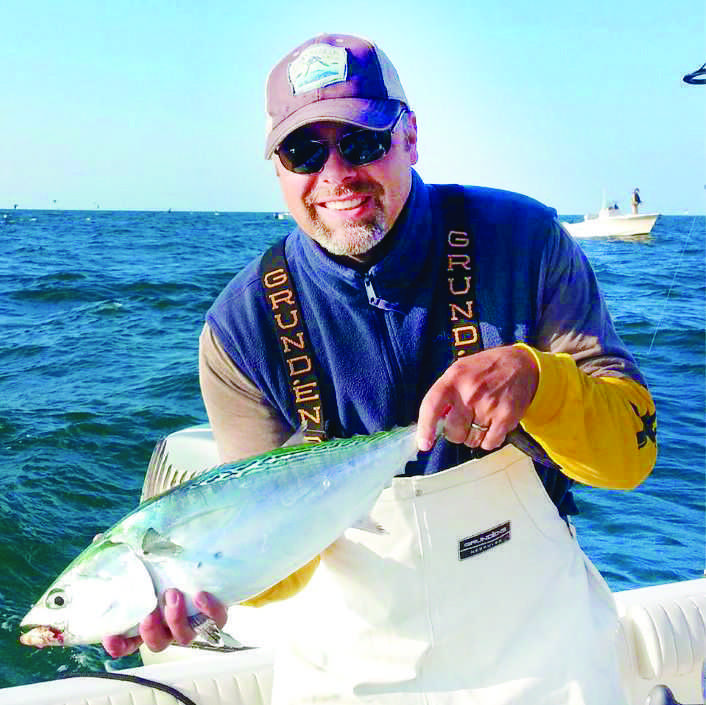Dialing In New England’s Bones and Albies
Jason Sawicki
Atlantic bonito and false albacore (little tunny) are two of the more challenging fish anglers come across in New England waters. These fish require technical approaches that vary when compared to blues and striped bass. For the angler versed in the ways of bones and albies, seeing people chasing schools of breaking fish with atom poppers and other monstrosities during the late summer and fall can be all together funny.
Being tunoids, both false albacore and bonito have excellent eyesight and forage on small baitfishes native to our area that include silversides, small sand eels, juvenile herrings and bunker. Showering “rain bait” encountered during the late summer and early fall is often a harbinger to the presence of these speedy little tunas. In order to be consistently successful, there are a few tricks, with the most important being how to identify and approach to get within casting range.
Small tunas slash across the surface leaving a much smaller splash than blues or striped bass of equal size. When coming across busting fish, it pays to observe before taking action. Bones and albies will follow a pattern up and down a shoreline, piece of structure or current break when feeding. Understanding this and determining where to place your boat for a drift that will put you in casting range is one of the big challenges in hooking up. Seldom is charging into a school of feeding fish very effective.
On my boat, I use Quantum and FinNor spinning gear, and on the fly-fishing front I am armed with a pair of Cheeky Mojo 425 reels paired up with Sage 9-weight rods. The new Quantum Cabo 40 and Quantum Smoke reels are ideal with smooth drags that handle the blistering runs of these hard chargers. These reels can be spooled with 20- to 30-pound braid or 10- to 12-pound mono for casting the light offerings required. I typically add a 3-foot leader of 12- to 20-pound fluorocarbon leader.
Terminal tackle ranges from metals like Deadly Dicks, Kastmaster spoons and Swedish pimples to narrow-profiled swimming plugs that include Rebel Fastracs, Rapalas and Yo Zuris. Last year we had great success on albies with the new SI Epoxy jigs in the smaller sizes with both the natural colors and pink working best. On calm days when fish are difficult, soft baits will often get bit when nothing else will. My go-to soft baits include Albie Snax, which can either be twitched near the surface or fished dead-stick style. Good colors are amber, pink, white, and the herring/sand eel colors. The only problem I regularly have with these is their light weight results in shorter casts, so you need to get in close range. This circles back to my initial point of being observant and patient.
Being able to consistently hook and catch bones and albies is very rewarding, and once you master these tactics they are directly applicable when you decide to hunt school blue fin tuna with up-scaled gear.
